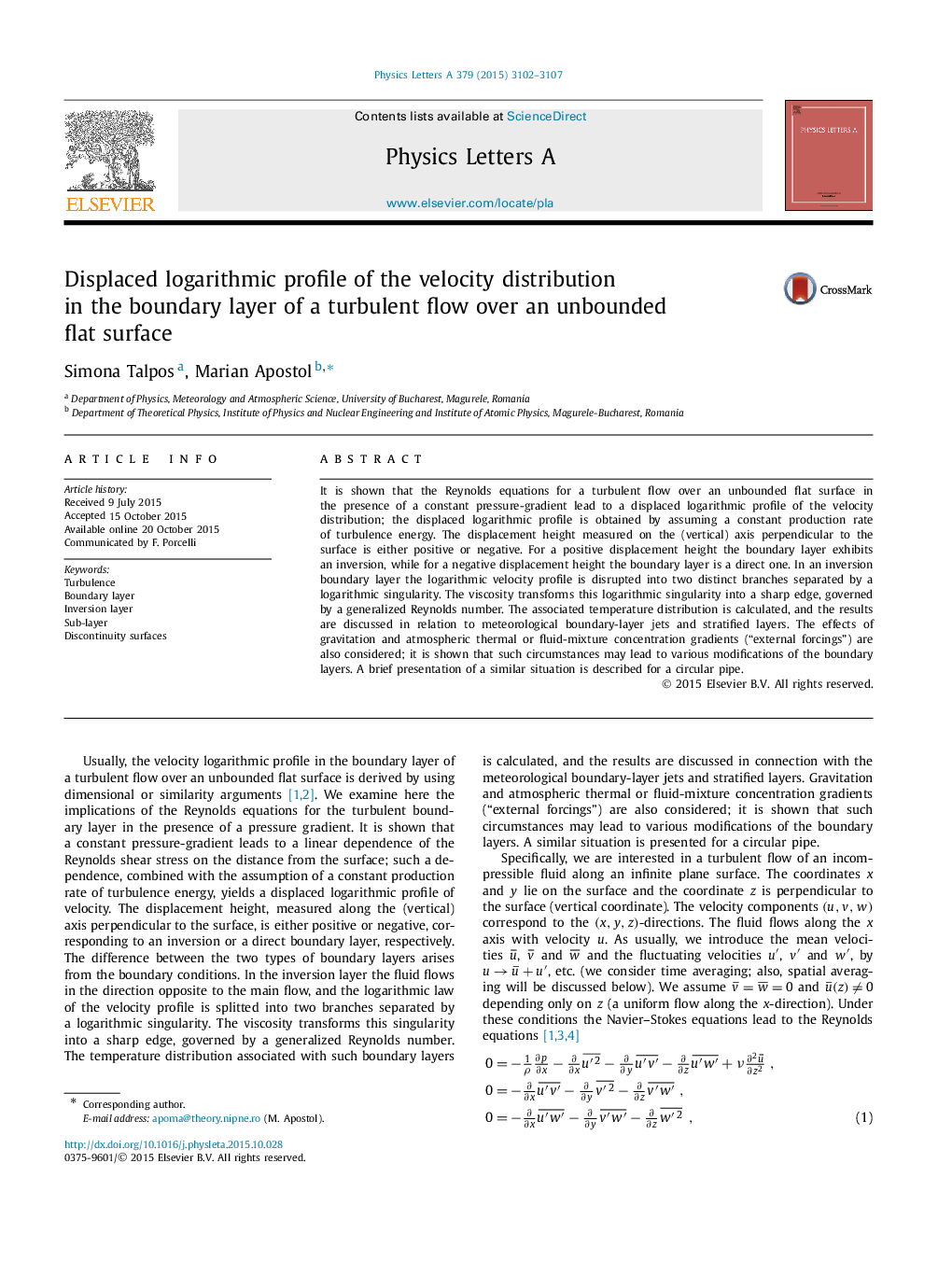| Article ID | Journal | Published Year | Pages | File Type |
|---|---|---|---|---|
| 1863436 | Physics Letters A | 2015 | 6 Pages |
•The Reynolds equations are employed for turbulent boundary layers.•The conservation equation for the turbulence energy is established.•The equations are solved for a constant production rate of turbulence energy.•A displaced logarithmic law is obtained for the velocity profile.•This law points out an inversion boundary layer.
It is shown that the Reynolds equations for a turbulent flow over an unbounded flat surface in the presence of a constant pressure-gradient lead to a displaced logarithmic profile of the velocity distribution; the displaced logarithmic profile is obtained by assuming a constant production rate of turbulence energy. The displacement height measured on the (vertical) axis perpendicular to the surface is either positive or negative. For a positive displacement height the boundary layer exhibits an inversion, while for a negative displacement height the boundary layer is a direct one. In an inversion boundary layer the logarithmic velocity profile is disrupted into two distinct branches separated by a logarithmic singularity. The viscosity transforms this logarithmic singularity into a sharp edge, governed by a generalized Reynolds number. The associated temperature distribution is calculated, and the results are discussed in relation to meteorological boundary-layer jets and stratified layers. The effects of gravitation and atmospheric thermal or fluid-mixture concentration gradients (“external forcings”) are also considered; it is shown that such circumstances may lead to various modifications of the boundary layers. A brief presentation of a similar situation is described for a circular pipe.
